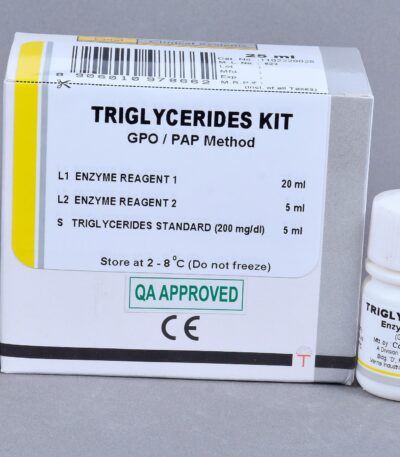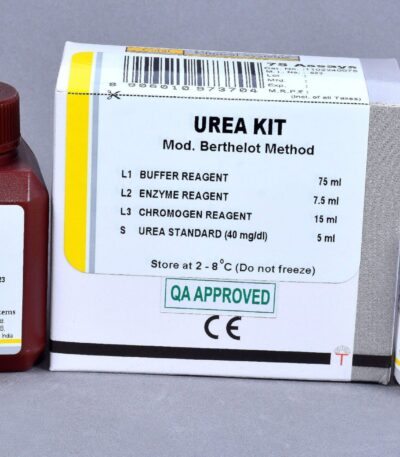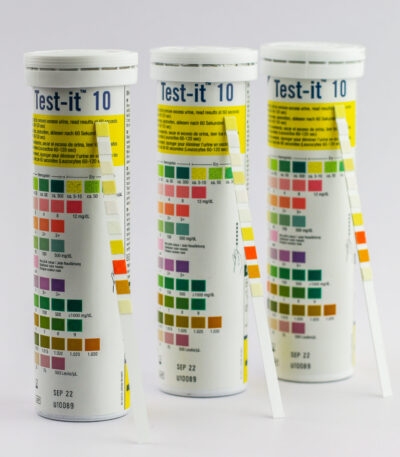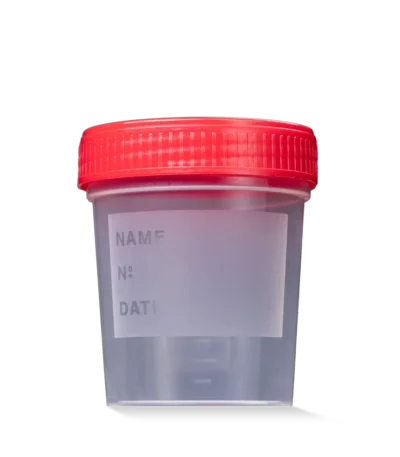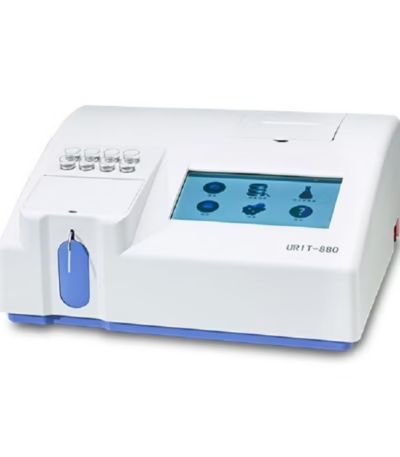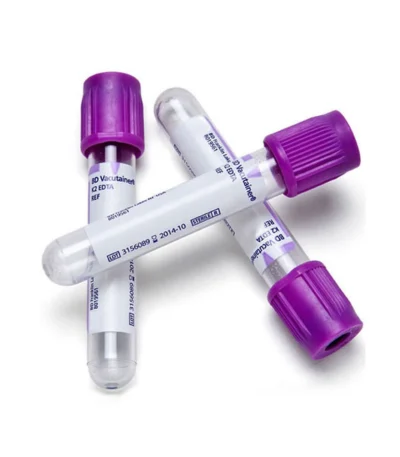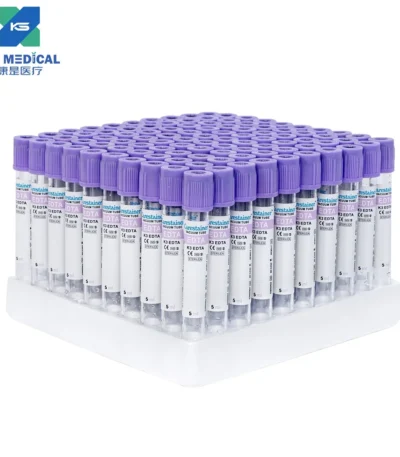Filter by price
Stock status
Showing 169–180 of 185 results
Triglycerides (TG) Reagents
🔬 1. Szasz Method (Standard for GGT)
Principle
GGT catalyzes the transfer of the γ-glutamyl group from a synthetic donor substrate to an acceptor molecule.
Reaction: L-γ-glutamyl-3-carboxy-4-nitroanilide
-
Glycylglycine
→ 5-amino-2-nitrobenzoate (colored product) -
γ-glutamyl-glycylglycine
The rate of formation of 5-amino-2-nitrobenzoate is measured kinetically.
Measurement
-
Absorbance: 405–410 nm
-
Mode: Kinetic, multiple readings (rate method)
-
Proportional to: GGT activity (U/L)
Ultra-Pure Distilled Water – 1l,Free from minerals, metals, and impurities
Ultrasound Jelly – 5 Litres
Ultrasound Printer – Brand New
Ultrasound Printer – Refurbished
Ultrasound Printing Paper
Urea Reagents
Principle of Measurement
1. Urease–GLDH Method (Enzymatic UV)
(Most widely used, highly specific)
How it works:
-
Urease enzyme hydrolyzes urea → ammonia + carbon dioxide.
-
Ammonia reacts with α-ketoglutarate in the presence of GLDH (glutamate dehydrogenase).
-
NADH is oxidized to NAD⁺, causing a decrease in absorbance at 340 nm.
-
The rate of absorbance decrease is proportional to urea concentration.
Advantages:
-
Very specific
-
Minimal interference
-
Ideal for automated chemistry analyzers
2. Berthelot (Indophenol) Colorimetric Method
(Common in semi-auto analyzers)
How it works:
-
Urease converts urea to ammonia.
-
Ammonia reacts with phenol and hypochlorite → blue indophenol dye.
-
Absorbance measured at 580–600 nm.
Advantages:
-
Stable color formation
-
Suitable for manual and semi-automatic systems
3. Diacetyl Monoxime (DAM) Method (Older method)
Forms a yellow complex; used mainly in research.
Reagent Components
Urease–GLDH Reagents May Contain:
-
Urease enzyme
-
GLDH enzyme
-
NADH
-
α-ketoglutarate
-
Buffer solution
-
Surfactants and stabilizers
-
Preservatives
Berthelot Reagents May Contain:
-
Phenol
-
Sodium nitroprusside
-
Hypochlorite
-
Buffer solution
Packaging Formats
-
Two-reagent systems (R1 buffer + R2 enzyme)
-
Single-reagent kits (less common)
-
Analyzer-specific liquid cartridges
Typical volumes: 25 ml, 50 ml, 100 ml, 250 ml.
Uric Acid Reagents
Principle of Measurement
1. Uricase–Peroxidase (Uricase/POD) Method (Most common)
Reaction Process
-
Uricase converts uric acid into allantoin, CO₂, and hydrogen peroxide (H₂O₂).
-
H₂O₂ reacts with a chromogenic dye in the presence of peroxidase, forming a colored quinone-imine or similar compound.
-
The color intensity is measured photometrically between 520–550 nm, proportional to uric acid concentration.
Advantages:
-
High specificity
-
Minimal interference from glucose, ascorbate, and bilirubin (depending on kit formulation)
-
Widely compatible with automated analyzers
Reagent Components
A typical uric acid reagent kit contains:
R1 (Buffer/Enzyme reagent)
-
Phosphate buffer
-
Uricase enzyme
-
Peroxidase enzyme
-
Chromogenic dye precursors
-
Surfactants and stabilizers
-
Preservatives
R2 (Color reagent) (in two-reagent systems)
-
Dye enhancer or color-developing components
-
Auxiliary stabilizers
-
Preservatives
Some kits come as single ready-to-use reagent.
Packaging Formats
-
Liquid-stable reagents (most common)
-
Two-reagent packs (R1 + R2)
-
Analyzer-specific cartridges
-
Optional calibrators and controls
Common volumes: 25 ml, 50 ml, 100 ml, 250 ml, and larger bulk sizes.
Sample Types
-
Serum
-
Plasma (heparin, EDTA)
-
Urine (usually diluted before measurement)
Urinalysis Strips
Urine Containers
URIT‑880 Semi‑Automated Chemistry Analyzer
Key Features & Specifications
-
User Interface: 7‑inch colour touch-screen operation.
-
Optical/Measurement System:
-
Light source: Halogen lamp, 6 V/10 W.
-
Wavelengths available: 340 nm, 405 nm, 492 nm, 510 nm, 546 nm, 578 nm, 630 nm, 700 nm.
-
Absorbance range: ‑0.3 to 4.0 Abs.
-
Flow cell: 10 mm quartz cell, volume ~32 µL.
-
-
Methods Supported: Endpoint, kinetic, two‑point kinetic, dual wavelength, ABS.
-
Sampling Volume: Adjustable 100 µL to 9,999 µL (recommended ≥ 500 µL).
-
Incubation Positions: 8 inner incubation positions.
-
Memory Capacity: Up to 300 test items and ~30,000 test results.
-
Physical Size (approx): 362.5 mm × 341 mm × 165 mm (L × W × H).
-
Power / Operating Environment: AC 110–220 V, 50 Hz; ambient temperature 10 °C–32 °C; humidity up to 85%.
-
Other Features: Supports barcode reader; built‑in thermal printer; multiple interface ports (USB, RJ‑45, etc.).
Vacutainer – EDTA Tube for Reliable Hematology Testing
Summer health medical supplies limited.
We are happy to serve you fro all your health, medical and hospital supplies. Contact Us Here for any enquiries that you may need clarification.

